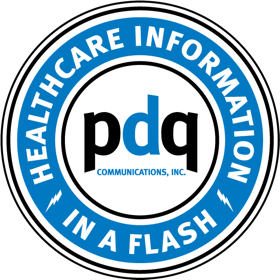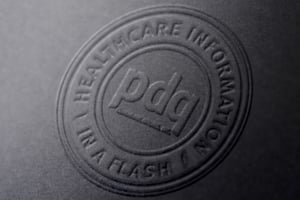Healthcare professionals (HCPs) have always been busy, but the novel coronavirus (COVID-19)...
Healthcare marketers face the significant challenge of reliably connecting with their target HCP audience. Generally, healthcare providers are incredibly busy and constantly bombarded with marketing material vying for their attention.
The best way to set yourself apart from your competition is to produce content that is targeted, relevant, and informative, and deliver your messaging in a timely and convenient manner that inspires further engagement, and eventually, conversions.
An important factor that can make all the difference is how often you actively engage with your audience through marketing communications. While you don’t want to inundate them with an overabundance of messaging, you do want to leave a memorable impression and keep in contact frequently enough for them to recognize your brand as a valuable resource.
Here’s what you should know when deciding how often to deploy your marketing communications:
What Are the Most Useful Marketing Communication Channels for HCP Audiences
Marketers utilize a range of engagement platforms and content strategies to attract and interact with healthcare prospects. These can encompass everything from physical and online advertising, newsletters, public relations content, sales presentations, social media posts, and more.
The most useful channels for reliably keeping in touch with healthcare providers include email and direct mail.
It’s advantageous to reach out to your HCP prospects using multiple communication channels and well-timed deliveries to reinforce the impact of your content. Crafting meaningful content for your various communication platforms and audience segments, and deploying them in the most effective way are essential aspects of any successful HCP marketing strategy.
How Often Should You Deploy Marketing Communications Across Different Channels?
While it’s important to stay connected with your healthcare audience, you don’t want to spam them with repeated or irrelevant content. Finding the right frequency to send your marketing material is pivotal to getting your messaging in front of the right people at the right time to encourage engagement without it becoming an encumbrance.
This is a preferred channel among healthcare providers for its convenience and ease of access, but because of that you’ll have to be even more careful not to over send emails.
According to an article published by online marketing company Constant Contact, 69 percent of consumers reported the primary reason they opted out of mailing lists was because they received too many emails from an organization.
Many email marketing strategies recommend deploying emails about once a month, but according to an article published by email marketing firm Keap, depending on your audience’s interest level and receptiveness, you could slowly increase the frequency that you send email content to twice a month if you have new promotions or exciting offers.
For your more actively engaged prospects who’ve repeatedly interacted with your platforms or signed up for updates or promotional material, you can increase the cadence of your deployments to once or twice a week if needed.
Direct Mail
Direct mail is a valuable offline marketing channel that is highly personalized, extremely customizable, and especially effective at connecting your messaging to the right healthcare providers, even boasting a greater return on investment (ROI) than paid advertisements.
According to the “2022 Direct Mail Industry Benchmark Study” by direct response marketing firm SeQuel Response, 96 percent of respondents reported using direct mail, with 65 percent of marketers seeing improvement in campaign performance.
Direct mailers can come in many unique shapes and sizes, and because of its tactile nature, have the potential to leave a greater impression on your audience. Healthcare marketers should try to deploy direct mail campaigns every 21 days to keep them engaged and informed, without cluttering their mailbox.
How to Optimize Your Marketing Communication Strategies
In addition to the timing of your campaign deployments, the key to making the most of your numerous communication platforms is to utilize them together to reinforce your brand awareness and the impact of your messaging.
You should also monitor the results of your various campaigns regularly to improve your approach.
Tracking the most important key performance indicators (KPIs) for your targeted direct mail and email campaigns—such as open rates, website visits, engagement, market qualified leads (MQLs), conversions, and return on investment—will provide a better understanding of your audience and their preferences, identify additional conversion opportunities, and help you adapt your overall strategy for long-term success.
Partner With PDQ Communications to Maximize the Impact of Your Marketing Communications Strategies!
The best way to navigate the myriad challenges of effectively connecting with your ideal healthcare prospects is to work with a marketing partner such as PDQ Communications possessing the knowledge, resources, and experience to help you develop and optimize your content and deployment strategies to better attract and convert the perfect HCPs for your campaigns.








